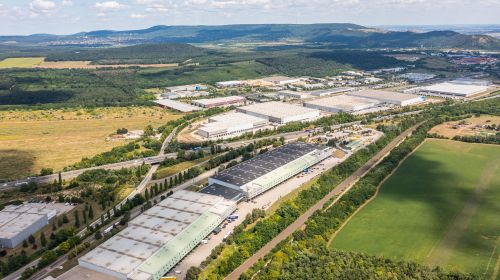Living on the crest of the wave
Residential
“We have been driving a super new car along a new motorway. The weather is beautiful, so nothing can go wrong,” is how Katarzyna Kuniewicz, a partner and head of the market research and analysis department at Reas, characterises the Polish residential market in 2016. In the last quarter of 2016, 18,100 homes were sold in the six largest markets in Poland (Warsaw, Kraków, Wrocław, the TriCity, Poznań and Łódź), i.e. 25 pct more than in the previous quarter. Over the entire year, 62,000 transactions were concluded, exceeding last year’s historic figures. “Interestingly, around two-thirds of the transactions were cash-based. The sales boom did not create a mortgage boom. This may confirm the development of a middle class in our country, which has the funds for such purposes,” comments Kazimierz Kirejczyk, the president of Reas. “Where do their funds come from? From various sources: increasingly better salaries, the withdrawal of deposits – which are less profitable these days – from selling their previous apartments, from the money in the biscuit tin, or from family working abroad.”
The big six
Even though the sales increase was not as spectacular in all cities the analysed by the company as e.g. it was in Wrocław (28 pct y-o-y), Warsaw and the TriCity (26 pct y-o-y), it was still remarkable. The growing demand had to be constantly satisfied by developers, who launched the sales of 65,000 new apartments over the twelve month period (almost 19,000 in Q4 alone). Wrocław turned out to be the absolute record breaker interms of the sales of apartments per 1,000 inhabitants – as well as in European terms. “A sales growth of over 20 pct was registered by developers last year, possible thanks to the strong activity of two significant client groups: young buyers of first apartments who qualify for the Apartments for the Young programme, and individual investors who are withdrawing bank deposits with low interest rates and buy small apartments for rent instead,” says Kazimierz Kirejczyk.
He also points to the considerable growth in buyers who are buying an apartment in order to improve their current living conditions, as possibly signifying a generational change on the market. “It is worth noting that we have been managing to balance the supply and the demand, and this always has an excellent influence on the market and the entire economy,” he adds. This resulted in a decrease in unsold apartments and developers tightening their sales terms. “A 2 pct discount is all that can be negotiated at the initial stage of the project these days,” adds Katarzyna Kuniewicz.
Slightly leaner years
Experts forecast a decline in the significance of programmes supporting the development of the market. Taking into account the price requirements of the programme, developers launched significantly fewer new projects and focused on replenishing their offers with apartments which meet the requirements of other groups of buyers. This resulted in a 6 pct increase of offer prices compared to the situation at the end of December 2015. The good news is that we still have positive forecasts for GDP growth, which should stabilise in the 3.0–3.5 pct bracket. We are also seeing a stabilisation of the job market and good moods among buyers. However, interest rates are expected to rise, starting in H2 2017 and reaching their peak in 2019, and this will mean not only a decline in buyers’ credit standings but also to a reduction in the attractiveness of investing in apartments for rent. This will lead to a gradual decrease in demand from the two most important groups of apartment buyers. On the other hand, the new Apartment Plus programme should shift financial support to the rental segment, which could indirectly influence the purchasing decisions of people who buy investment apartments, and these, according to Reas, could constitute as much as 30 pct of the total of 2016 sales.
“The behaviour of buyers making fully cash-based purchases will be of key importance for 2017 sales, whether these will be purchases for their own needs or investment ones. Both groups will most probably still be very active in the market, and sales will only be slightly lower compared to 2016,” forecasts Kazimierz Kirejczyk. “The decline in demand from individual buyers should be partly compensated by purchases made by institutional investors over the next two years. This year will also be marked by a decline in the availability of land for development projects,” claims Paweł Sztejter, a partner and head of the development consultancy department at Reas. “We should expect an adjustment in apartment prices in 2018, but even if prices or sales fall by a few or a dozen or so percent, we will still remain one of the best and most stable markets in Europe,” Katarzyna Kuniewicz insists. “Let’s not forget: we are driving a really good car on a new motorway. Even if the weather deteriorates, it will still be a nice drive.”





















































